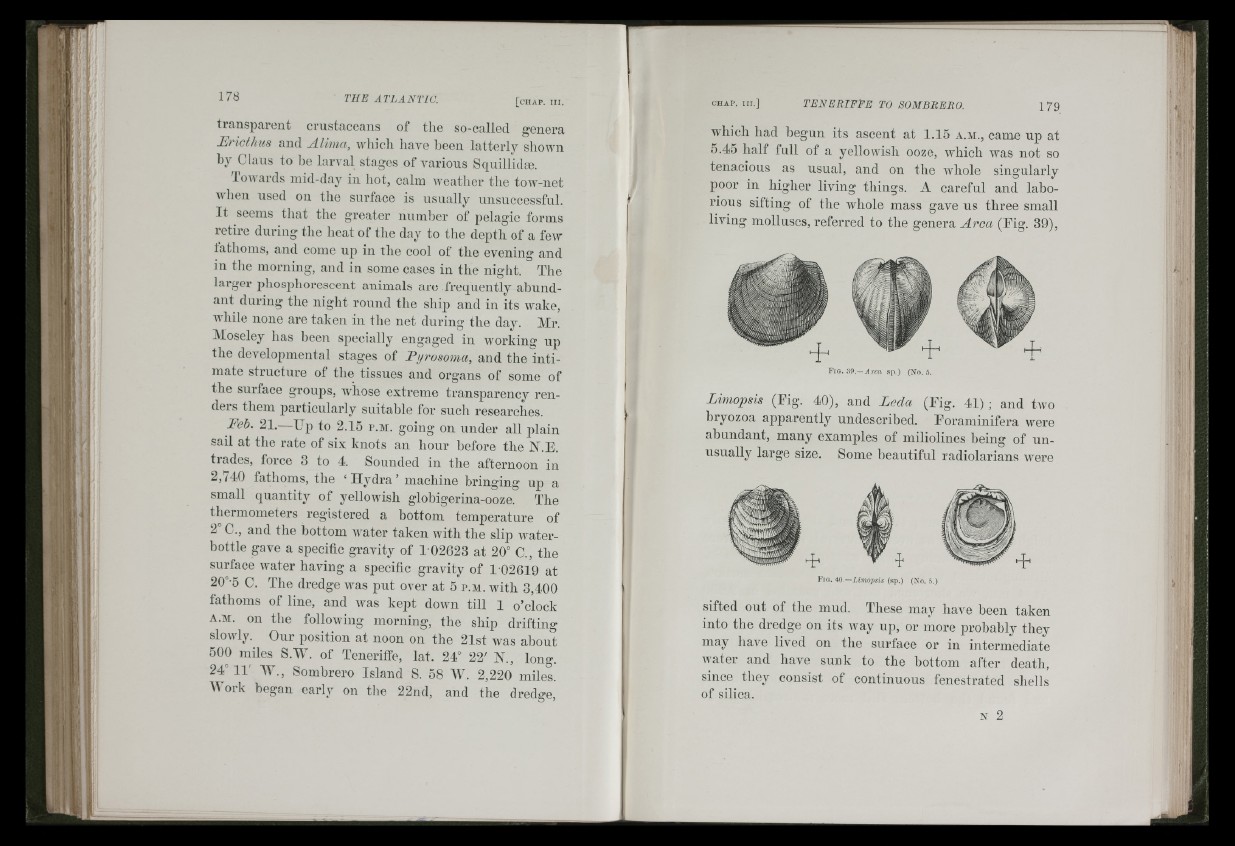
f
I i
178 T H E A T L A N T I C . [ c h a p . I I I .
transparent crustaeeans of the so-called genera
Evicthus and Alima, which have heen latterly shown
by Clans to be larval stages of various Squillidte.
loAvards luid-day iu hot, calm weather the toAA^-net
Avheu used on the surface is usually unsuccessful.
It seems that tlie greater numlier of pelagic forms
retire during the heat of the day to the depth of a fcAv
fathoms, and come up in the cool of the evening and
in the morning, and in some cases in the night. The
larger phosjihorescent animals are frequently abundant
during the night round the ship and in its Avake,
AA'hile none are taken iu the net during the day. Mr.
Moseley has been specially engaged in workiuo' up
the developmental stages of Eyrosoma, and the "intimate
structure of the tissues aud organs of some of
the surface groups, Avhose extreme transparency rendéis
them particularly suitable for such researches.
Feb. 21.—Up to 2.15 p.m. going on under all plain
sail at the rate of six knots an hour before the N.E.
trades, force 3 to 4. Sounded in the afternoon in
2,740 fathoms, the ‘Hydra’ machine bringing up a
small quantity of yelloAvish globigeriua-ooze. The
thermometers registered a bottom temperature of
2° C., and the hottom AA-ater taken Avith the slip AA^ater-
bottle gave a specific gravity of 1'02623 at 20° C., the
surface Avater having a specific gravity of 1 02619 at
20°-5 C. The dredge Avas put over at 5 p.m. AA'ith 3,400
fathoms of line, aud Avas kept doAvn till 1 o’clock
A.M. on the folloAviug morning, the ship drifting
slowly. Our position at noon on the 21st Avas about
500 miles S.Mh of Teneriffe, lat. 24° 22' N., long.
24° i r Mb, Sombrero Island S. 58 W. 2,220 miles.
Work began early on the 22nd, and the dredge.
CHAP. I I I .] t e n e r i p E e t o s o m b r e r o . 179
which had begun its ascent at 1.15 a.m., came up at
5.45 half full of a yellowish ooze, which AA'as not so
tenacious as usual, and on the Avhole singularly
poor in higher living things. A careful and laborious
sifting of the Avhole mass gave us three small
living molluscs, referred to the genera Area (Uig. 39),
F i g . S 9 . ~ A r c a s p . ) (N o . 5 .
Limopsis (Fig. 40), and Leda (Fig. 41); and two
hryozoa apparently uudescribed. Foraminifera were
abundant, many examples of miliolines being of unusually
large size. Some beautiful radiolariaus Avere
F i g . 4 0 — L im o p s i s ( .s p .) (X o . 0 . )
sifted out of the mud. These may have been taken
into the dredge on its Avay up, or more probably they
may have lived on the surface or in intermediate
Avater and have sunk to the hottom after death,
since they consist of continuous fenestrated slieils
of silica.